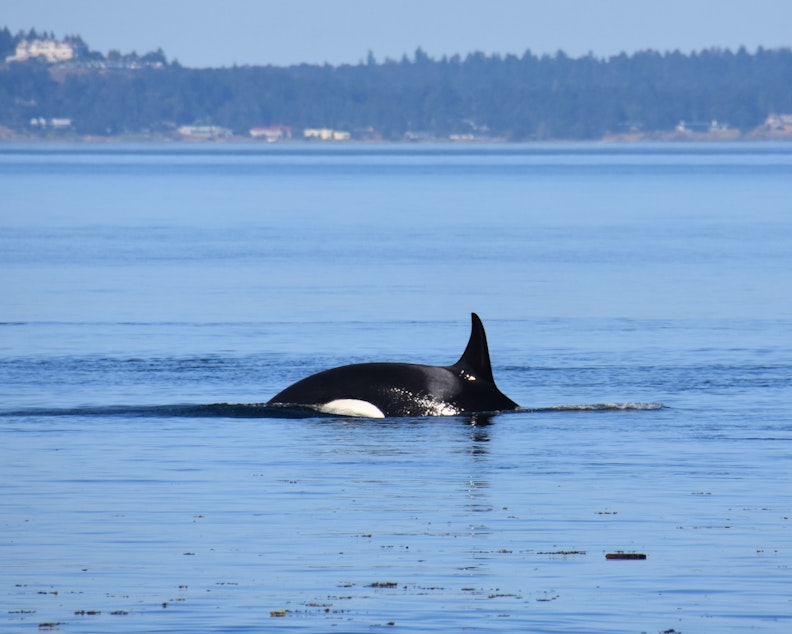Navy steams ahead with sonar tests despite state opposition, orca impacts

Over the objections of Washington state officials and orca advocates, the U.S. Navy is steaming ahead with a plan for seven more years of testing sonar and explosives in waters off the Northwest coast.
The Navy says the piercing noise from its tests and training activities could harm eight species of whales listed under the Endangered Species Act.
But Navy officials, backed up by the National Marine Fisheries Service, say the occasional, temporary disturbances won’t threaten the orcas’ or any other species’ survival.
“At this time the Navy intends to proceed over the objection of the state of Washington,” the Navy’s Record of Decision document, published Friday, states.
“Navy vessels, when present, do not add significantly to ambient noise levels or to the risk of vessel strike to marine mammals in comparison to the volume of non-Navy vessels,” the document signed by Acting Principal Deputy Assistant Secretary of the Navy James Balocki states.
“The Navy has adopted all practicable means to avoid or minimize environmental harm,” the decision document concludes.
Sponsored
Navy sonar pings
A U.S. Navy destroyer's sonar pings off San Juan Island in January 2016, courtesy Scott Veirs / Beam Reach.
“We’re disappointed that the Navy has chosen not to adopt the measures recommended by our state to ensure that its activities do not affect the southern resident killer whales,” Washington Department of Ecology spokesperson Andrew Wineke said in an email.
Among other changes, the heads of five Washington state agencies had called on the Navy in 2020 to shut down sonar operations when any orcas, endangered or not, were within 1,000 yards—5 to 10 times farther than the Navy proposal.
Gov. Jay Inslee’s office did not respond to a request for comment Friday afternoon.
Sponsored

“Washington understands that a trained and capable U.S. Navy is integral to our nation’s defense,” Inslee wrote to the National Marine Fisheries Service in 2020. Still, he urged the agency to “dramatically reduce” the amount of harm it would let the Navy do to orcas and other marine mammals.
Under the preferred alternative adopted by the Navy on Friday and approved by the fisheries service in October 2020, noisy naval exercises could disturb the region’s endangered orcas—which use sound to hunt salmon as well as to communicate with each other—up to 51 times a year.
“No southern residents are expected to be injured or killed as a result of the Navy’s activities,” Navy spokesperson Julianne Stanford said in an email.
Orca advocates say the endangered population of just 73 whales can be harmed by even brief disruptions of their usual routines.
Sponsored
“Doing things like eating, coming up to breathe, nursing their calves, breeding, and all of those are really critical activities, especially for the southern residents right now when they’re not getting enough to eat,” said Nora Nickum with the Seattle Aquarium. “They’re having a hard time finding scarce salmon, and noise and disturbance makes that even harder.”
“We recognize that Navy training and testing is necessary, but we believe the Navy could and should do more to adjust those activities to protect highly endangered orcas,” Nickum said.
“The Navy's got to do its part,” marine mammal biologist Tim Ragen of Anacortes said. “There's no reason they can't find other places where they can do these exercises where they won't harm highly endangered species and particularly the southern resident killer whale.”
Navy officials say their ships take varied measures to avoid harming whales, including avoiding areas where whales are likely to be found, posting qualified sailors to look out for marine mammals in the distance, and powering down sonar systems when whales are detected.




